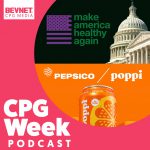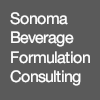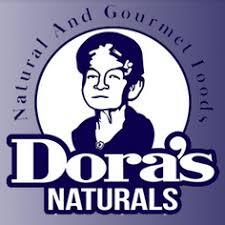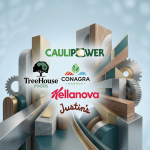My 5 Takeaways From the 2018 Winter Fancy Foods Show

Each time we go to a big trade show, the BevNET and Project NOSH teams get the opportunity to answer three of our favorite questions:
- What did you see that you felt was exciting or innovative?
- What was the biggest trend?
- What is going on with emerging brands that you just met or have talked about on your site or the podcast?”
And at the Winter Fancy Foods Show, which is traditionally the first food industry trade show of the year and just wrapped up this week in San Francisco, I feel as though it’s an early litmus for how the year is going to be. This year’s edition was no different. The foot traffic was solid, the vibe was energetic, and I was able to talk to people from all corners of the industry.
To give my answer to the questions that I posed at the top, I’ve distilled my experiences at this event into five key takeaways that hopefully shed some light on what’s on the mind of the industry right now:
Most brands are very bullish about 2018 and beyond
Generally speaking, when speaking to entrepreneurs about 2018 and what they are expecting, it’s all about one thing: growth. And in many cases, it’s rapid growth, be it overall sales growth, expansion of their product lineup, new hires to the team, marketing efforts, or some combination.
This is much different than a few years back, when entrepreneurs were much more tempered in their tone. Frustrations with raising money, concerns about the overall ecosystem, and questions about where a possible exit might come from have all but vanished for the time being.
The ultimate takeaway is this: entrepreneurs see few headwinds out there for brands trying to hit their 2018 plans. If there’s anything that these companies might not be seeing it’s the sheer amount of competition — and the potential for oversaturation — that exists at some levels.
Big changes at Whole Foods are scary
The company has had well publicized out-of-stocks, is no longer allowing in-store demos, has cooled off as a place to incubate new ideas, and has rolled out a new program that is being labeled as slotting fees (and, perhaps even more noteworthy, appears to be a campaign to eliminate brokers).
I find this very interesting for two reasons. First, most brands continue to speak very highly of Amazon’s core e-commerce platform/business. Second, it’s amazing that a company that used to be an industry darling has so quickly moved to a much less favored status. I’m sure some of this will smooth out in the long run, but I anticipate this to be an even bigger talking point in March at Natural Products Expo West.
Innovation on top of unproven innovations
Innovation in the industry is happening so fast and there’s a thirst for “new” like never before.
As a result, we’re seeing companies innovating on other companies’ innovations, which is a risk for two reasons. First, the base innovation is often times unproven or still in a very nascent stage. Second, adding another layer of complexity on top of it doesn’t help either the brand or the development of the underlying category.
Case in point: a new edible cookie dough that’s shelf stable and vegan. Edible cookie dough is a niche concept (albeit a tasty one) and this product solves the requirement for refrigeration and includes vegan consumers. Now I have nothing against this idea or product, but rather I wonder how big of a market exists for this as well as what the longevity of such a concept is. This is just one example, but there were plenty of others out there at the show.
Investment money to is mostly going to fund short term ideas
Big money acquisitions of fast-growing brands (thank you, RXBAR) are continuing to create a world where the majority of the money is going to fund ideas that can be fully realized in 3-5 years.
Companies that are after much larger disruption and need a longer runway are much smaller in number, often invite ridicule in the process (e.g. Juicero or Hampton Creek), and struggle to keep investor interest when they could put their money into something with a quicker return.
I realize this thought is not overly original, but my point is this: if all of the money is pouring into shorter term ideas (e.g. the 5000th jerky company to hit the market) how does the category continue to grow at a good rate? Does it eventually become stale because we haven’t invested in what’s next?
Winter Fancy Foods Show is still a warm-up to Expo West, but it’s nevertheless an invaluable event
Over the years, the Fancy Foods Show has been in the shadows of the monster that is Natural Products Expo West. Many companies are either exhibiting without new products or are simply teasing whatever they might be launching — or thinking of launching — at Expo West.
This doesn’t make the Fancy Foods Show a bad show, but it makes it a different one where the key benefit appears to be better networking. Unlike Expo West, where it’s almost impossible to walk through the aisles and definitely challenging to carry on a conversation of substance with anyone, this show has plenty of high value food and beverage industry people (investors, retailers, other brand execs) walking the aisles with a much much lighter schedule.
Networking events after the show (thanks for the drinks, ForceBrands, VMG, CAVU, Giannuzzi Group, etc.) also provide a much more manageable environment and are generally within walking distance of the Moscone Center. That makes the show tremendously valuable to attend and get a reading on where the industry will head into the coming year.
















